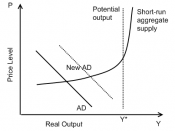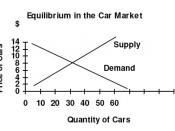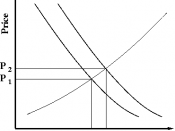Introduction
At the 2003 Rugby World Cup held in Australia, rugby officials set ticket prices for all matches in advance. However, when the tickets went on sale some seats were sold out while others remained unsold. This assignment will aim to firstly, prove that the reason for some matches selling out and others not, was due to the price and number of seats available in each category. Secondly, show the effects the popularity of a match has on demand and the amount charged. Finally, how the economic situation contributing to average incomes influences the amount of seats purchased. To prove this a number of supply and demand analysis graphs and income elasticity workings will be offered in order to further assist the reader in understanding the economic concepts that contribute to the given issue.
Definitions
Income Elasticity Of Demand: A Measure of the responsiveness of the quantity demanded to a change in income.
Supply & Demand
Market supply and demand analysis is a fundamental aspect in any business today to decide how much a good or service will be priced, and is also the basic tool of microeconomic analysis. In Australia's capitalist economy the consumer has the right to make the choice on which good or service they wish to purchase, this is also referred to as Consumer Sovereignty (Layton, Robinson & Tucker., 2002, p.58). This concept played a large role in the 2003 Rugby World Cup, in that the customer was able to choose the match they watched and the category they wished to sit in, the choice bring Category A, B or C. 'A' being the most expensive with the most number of seats and 'C' being the cheapest with the least amount of seats.
Argentina vs. Romania
Assumptions
Category Price Quantity
A $25 40000
B $15...


